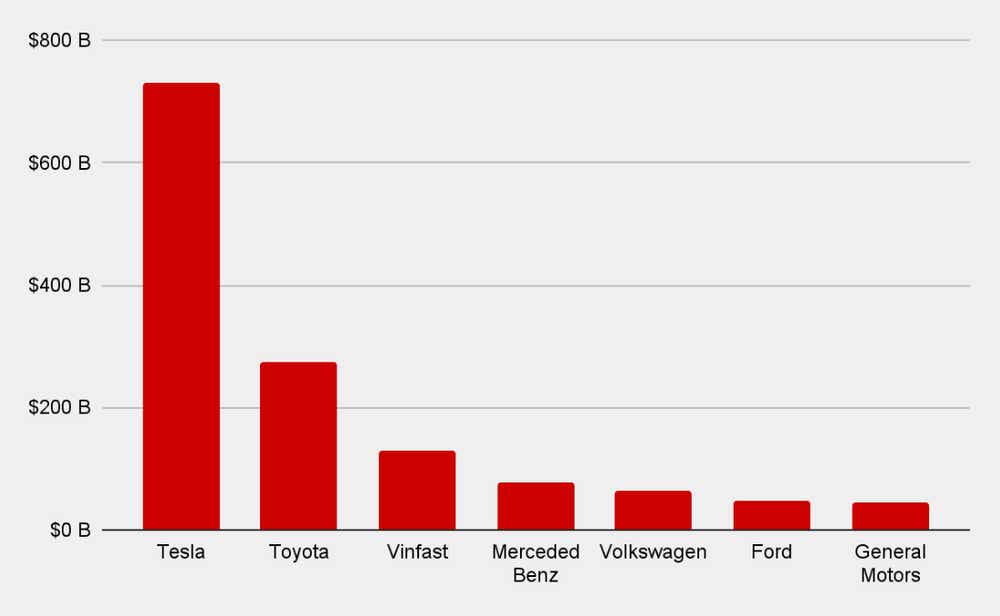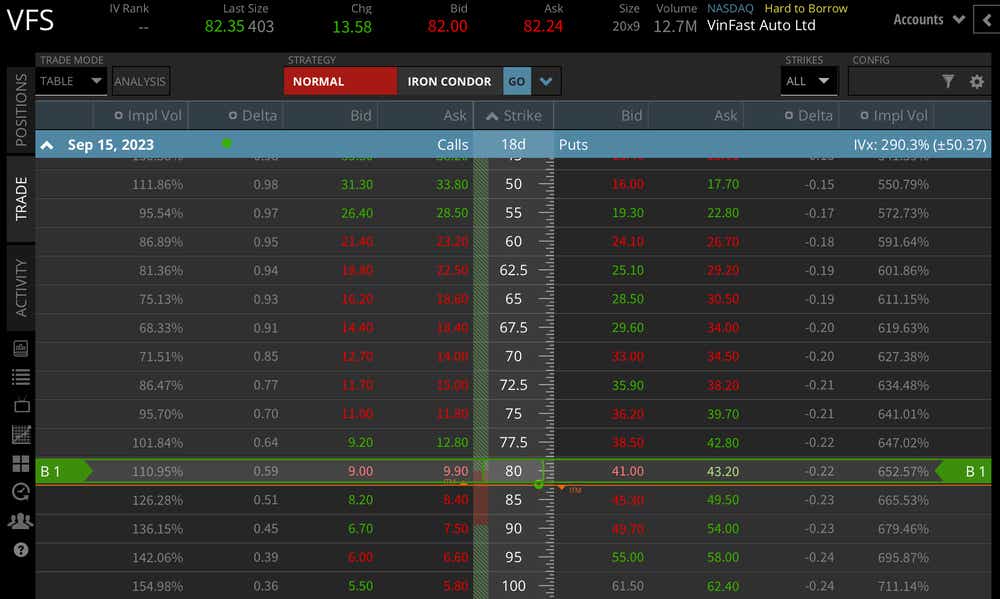Vinfast is the Smoking Hot Vietnamese Auto Stock You Need to Know

Vinfast is the Smoking Hot Vietnamese Auto Stock You Need to Know
VFS shares are up 700% in less than two weeks.
- VinFast went public on Aug.15 after completing a SPAC merger with Black Spade Acquisition Co.
- Since its debut, VinFast shares have rallied over 700% which has seen it become the third-most valuable automaker.
- VinFast stock options began trading on Monday, Aug. 28.
If you sort the list 8,361 tradable stocks in order of performance, you will see that Carvana (CVNA) is number one with a year-to-date return of 857%. Immediately behind it with a return of 723% is a little-known Vietnamese electric vehicle company that is making waves after only two weeks of trading.

VinFast (VFS) was founded in 2017 by Vingroup and made its first efforts at becoming a public company in 2021. The automaker planned to merge with a special-purpose acquisition company (SPAC) in the U.S. but decided in May of to put things on hold due to the increased scrutiny surround SPACs at the time. On Aug. 15, the Vietnamese EV maker finally achieved its goal by successfully completing a SPAC merger with Black Spade Acquisition Co.
VinFast has made an explosive debut on Wall Street and, at $130 billion, has quickly risen in valuation to become the third-largest automaker behind Tesla (TSLA), at $730 billion in market cap and Toyota (TM), at $275 billion.
For those keeping score at home, VFS currently has a larger market capitalization than Ford (F), General Motors (GM) or Honda (HRC), which have been around for a combined 300+ years as public companies. How did this all happen so fast?
Well, for starters, the stock has rocketed up more than $50 from its debut through Monday's close of Monday. It's also worth noting that most of the company, 99% to be exact, remains under the ownership of its parent entity. This means only a limited number of shares available for trading. As a result, shares have been trading with a heightened sense of volatility since their debut on the Nasdaq. The stock has either jumped or tanked more than 10% in nine of the past 10 trading sessions.

On Monday, two weeks after its debut, VFS finally got tradeable options. However, saying these derivatives are "tradeable" is a stretch.
If you price out the at-the-money straddle one this becomes clear: VFS options are pricing a huge drop in the stock's future. Shares are hard to borrow, which means it is difficult to locate traders with long stock to initiate a short-sale trade. As a result, this creates a stock that is extremely skewed to the downside, thus making puts extraordinarily expensive. As more float becomes available, this will change.
In the meantime, with little-to-no information on long-term volatility available, VFS is a 'no trade' for me. For now.
Jermal Chandler, tastylive head of options strategy, has been in the market and trading for 20 years. He hosts Engineering the Trade, airing Monday, Tuesday, Thursday and Friday. @jermalchandler
For live daily programming, market news and commentary, visit tastylive or the YouTube channels tastylive (for options traders), and tastyliveTrending for stocks, futures, forex & macro.
Trade with a better broker, open a tastytrade account today. tastylive, Inc. and tastytrade, Inc. are separate but affiliated companies.
Options involve risk and are not suitable for all investors. Please read Characteristics and Risks of Standardized Options before deciding to invest in options.